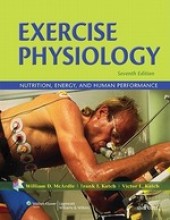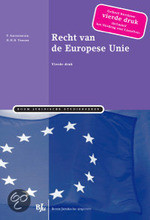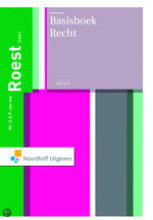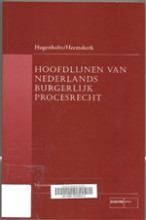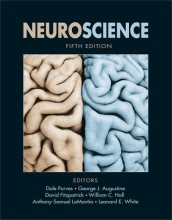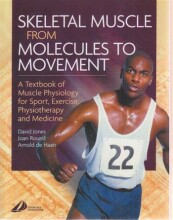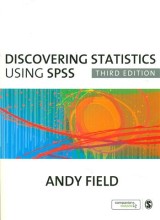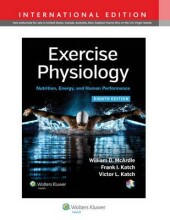Samenvatting: Exercise Physiology : Energy, Nutrition, And Human Performance | 9781608318599 | William D McArdle, et al
- Deze + 400k samenvattingen
- Een unieke studie- en oefentool
- Nooit meer iets twee keer studeren
- Haal de cijfers waar je op hoopt
- 100% zeker alles onthouden
Lees hier de samenvatting en de meest belangrijke oefenvragen van Exercise physiology : energy, nutrition, and human performance | 9781608318599 | William D. McArdle, Frank I. Katch, Victor L. Katch.
-
1 Carbohydrates, Lipids and Proteins
Dit is een preview. Er zijn 9 andere flashcards beschikbaar voor hoofdstuk 1
Laat hier meer flashcards zien -
1.1 Carbohydrates
Dit is een preview. Er zijn 51 andere flashcards beschikbaar voor hoofdstuk 1.1
Laat hier meer flashcards zien -
Wat is de standaard formule van een koolhydraat?
(CH2O)n
-
Hoeveel monosachariden kan een oligosacharide bevatten?
2 - 10
-
Welke drie paden kan glucose volgen nadat het is opgenomen in de darmen?
- Het wordt een energiebron voor cellulair metabolisme
- Het wordt als glycogeen opgeslagen in de lever en spieren
- Het wordt omgezet naar vet = triacylglycerol
- Het wordt een energiebron voor cellulair metabolisme
-
Wat zijn monosachariden? Geef 3 voorbeelden, en noem een proces dat plaatsvindt met monosachariden.
Basis eenheid van een koolhydraat, een suiker molecuul.
Bijv glucose, fructose, galactose
Gluconeogenese vindt plaats met monosachariden. -
Wat zijn polysachariden? Noem twee plantaardige voorbeelden, en een dierlijk voorbeeld.
Complexer koolhydraatmolecuul.
Plantaardig:
- Zetmeel
- Vezels
Dierlijk:
- Glycogeen -
Wat zijn voedingsvezels en wat doen ze in het lichaam?
Het zijn plantaardige polysachariden, die zorgen voor een gezond gewicht en verminderen het risico op diabetes Mellitus type 2. -
koolhydraten in verhouding tot vetten (2)
- Worden 2 keer zo snel omgezet
- leveren 6% meer energie op
-
Wat is de aanbevolen hoeveelheid koolhydraten voor sedentaire personen en sporters? (uitgedrukt in procenten)
Sedentaire personen: 40-50%
Sporters: 60-70% -
Wat is je koolhydraatverbruik tijdens lage, middelmatige en hoge inspanning?
Lage inspanning: voornamelijk vetten
Middelmatige inspanning: vetten & koolhydraten
Hoge inspanning: voornamelijk koolhydraten -
Hoe veranderen de glycogeenvoorraden in je spieren tijdens koolhydraatstapelen? En wat is de procentuele prestatieverbetering?
Van 100-120 mmol/kg naar 150-200 mmol/kg
Prestatieverbetering van 2-3%
- Hogere cijfers + sneller leren
- Niets twee keer studeren
- 100% zeker alles onthouden
Onderwerpen gerelateerd aan Samenvatting: Exercise Physiology : Energy, Nutrition, And Human Performance
-
Carbohydrates, Lipids and Proteins - Carbohydrates - Kinds and sources of carbohydrates
-
Carbohydrates, Lipids and Proteins - Carbohydrates - Role of carbohydrates in the body
-
Carbohydrates, Lipids and Proteins - Carbohydrates - Carbohydrate dynamics in exercise
-
Carbohydrates, Lipids and Proteins - Lipids
-
Carbohydrates, Lipids and Proteins - Proteins
-
Vitamins, minerals and water - vitamins - Kinds of vitamins
-
Vitamins, minerals and water - vitamins - Role of vitamins
-
Vitamins, minerals and water - minerals - Role of minerals in the body
-
Vitamins, minerals and water - minerals - Calcium
-
Vitamins, minerals and water - minerals - The female athlete triad: Unexpected problem for women who train intensely
-
Vitamins, minerals and water - minerals - IJzer
-
Vitamins, minerals and water - water
-
Optimal nutrition for exercise
-
Energy value of food
-
Introduction to energie transfer - Energy the capacity for work
-
Introduction to energie transfer - Interconversions of energy
-
Introduction to energie transfer - Biological work in humans
-
Introduction to energie transfer - Enzymes and coenzymes alter the rate of energy release
-
Introduction to energie transfer - Hydrolysis and condensation: the basis for digestion and synthesis
-
Energy - Adenosine triphosphate: the energy currency
-
Energy - Phosphocreatine: the energy reservoir
-
Energy - Cellular oxidation
-
Energy - Energy release from carbohydrate
-
Energy - Energy release from fat
-
Energy - Energy release from protein
-
Energy transfer during exercise - Immediate energy: the ATP-PCr system
-
Energy transfer during exercise - Short-term energy: The lactic acid system
-
Energy transfer during exercise - Long-term energy: the aerobic system
-
Energy transfer during exercise - Energy spectrum of exercise
-
Measurement of human energy expenditure - Measuring the body's heat production
-
Human Energy Expenditure during rest and physical activity
-
Energy expenditure during walking, joggins,running and swimming
-
Individual differences and measurement of energy capacities
-
Pulmonary structure and function
-
Gas exchange and transport - Gas exchange in the lungs and tissues
-
Gas exchange and transport - Oxygen transport
-
The cardiovascular system - Cardiovascular system components - hart
-
The cardiovascular system - Blood pressure response to exercise
-
The cardiovascular system - The heart's blood supply
-
Cardiovascular regulation and integration - intrinsic regulation of heart rate
-
Cardiovascular regulation and integration - Extrinsic regulation of heart rate and circulation
-
Cardiovascular regulation and integration - Distribution of blood
-
Functional capacity of the cardiovascular system - Cardiac output
-
Functional capacity of the cardiovascular system - Cardiac output distribution
-
Functional capacity of the cardiovascular system - Cardiac output and oxygen transport
-
Skeletal muscle: structure and function - Gross structure of skeletal muscle
-
Skeletal muscle: structure and function - Skeleteal muscle ultrastructure
-
Skeletal muscle: structure and function - Muscle fiber alignment (werking van skeletspieren)
-
Skeletal muscle: structure and function - Muscle fiber type
-
The endocrine system:organization and acute and chronic responses to exercise
-
Training for Anaerobic and aerobic power
-
Muscular strength: training muscles to become stronger
-
Exercise at medium and high altitude
-
Exercise and thermal stress - Complications from excessive heat stress
-
Body composition assessment - Composition of the human body
-
Physical acitivity, health and aging
-
Clinical exercise physiology for cancer, cardiovasvular, and pulmonary rehabilitation
